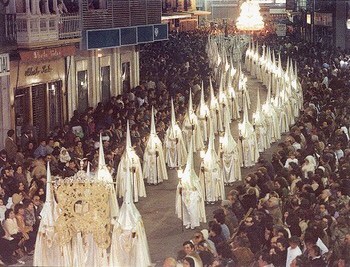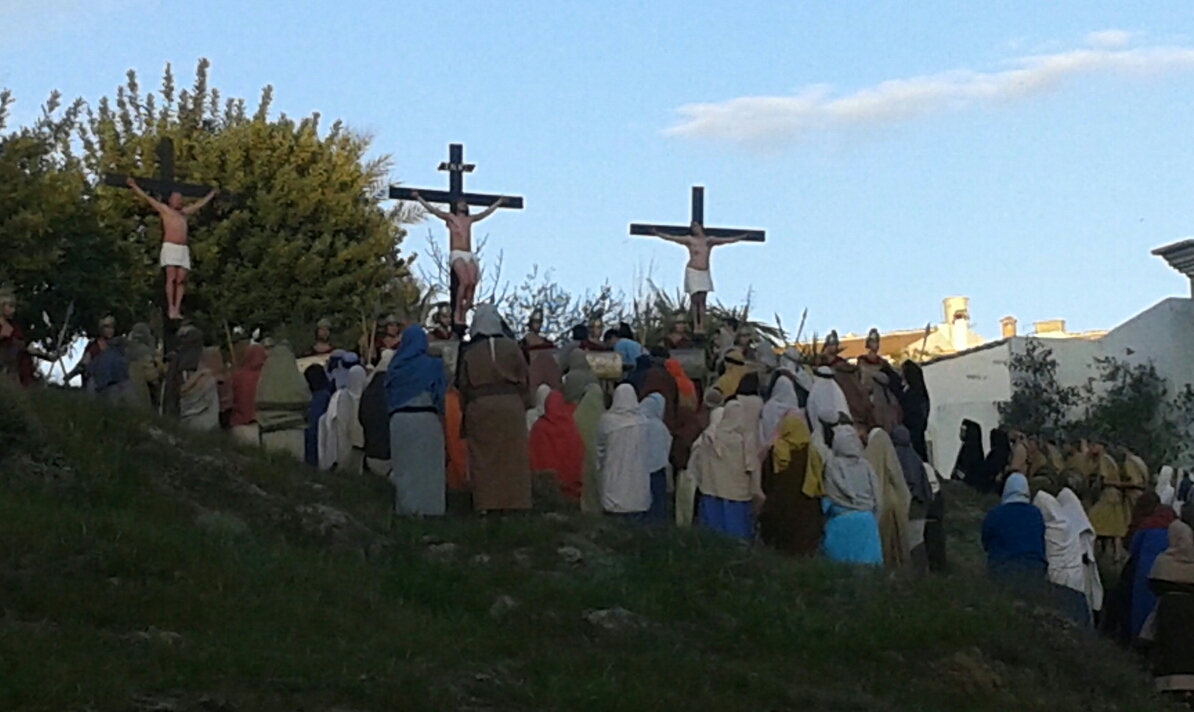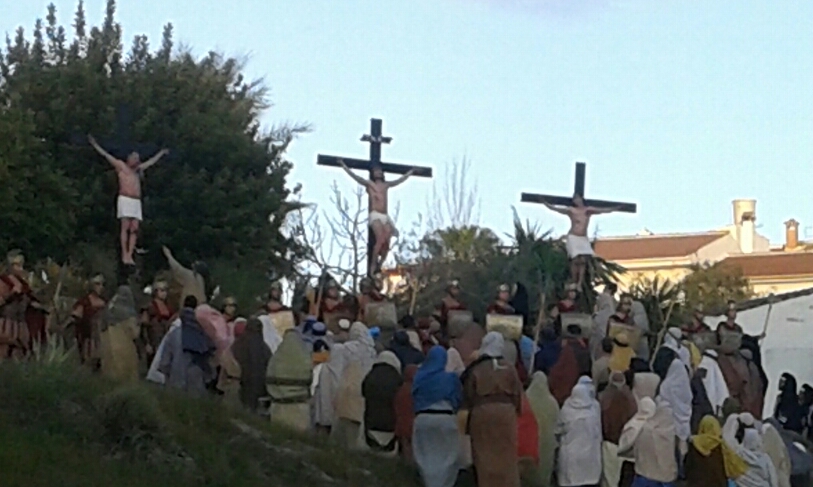|
Richard Jernigan -> RE: Semana Santa (Mar. 29 2016 22:08:30)
|
quote:
ORIGINAL: Leñador
Why do you suppose? People feel guilty about not going weekly so they make sure to go to the procession?
On the rare occasions I attend a religious ceremony out of a sense of social obligation, emotional engagement far exceeds the intellectual. I attribute it to the religious environment of my childhood.
My musical engagement with Semana Santa in Sevilla began--unknown to me--with learning the florid variations by the great Mexican trumpet virtuoso Rafael Mendez on the theme of "La Virgen de la Macarena."
As a youngster I had heard the pasodoble played by bullring bands in Reynosa, Monterrey, and the Plaza Mexico. It was not until I was actually in Sevilla, years later, during Semana Santa that I understood the connection of the music to the event.
As perhaps most people here know, the Spanish Gypsies especially revere La Virgen de la Macarena, some say due to her darker complexion than the other Virgins in the processions. The slow pasodoble is played by the sizable band, in their elegant uniforms, who accompany La Macarena's float in the procession. The closely packed members of the cofradía who carry the heavy float on their shoulders keep step to the music.
When the band takes a break, the men keep step to the beat of drums. After one procession passes, there is an interval. People chat. Those with seats may stand and stretch. Then the drums can be heard, at first faintly, then louder. People begin to quiet down and look up the street. As La Macarena approaches, the band strikes up. The sound of the theme in the trombones and tubas precedes the sight of the float. The music evokes a chorus of olés. Then La Macarena turns the corner of the crooked street, and comes into full view in her regal robes, illuminated by the dozens of tall candles on her float, the only light in the darkened street. The crowd roars, then falls silent.
Of course the other music associated with La Macarena are the saetas. One of the most dramatic events of Semana Santa is when La Macarena halts in the Calle de Sierpes, near the Cathedral, and from a balcony the saeta is sung to her.
Preceding the saeta is another piece that belongs to La Macarena. She is accompanied not only by the band, with its impressively professional sound, but also by a corps of drums and bugles. Hearing them first on records, I was struck by the aggressively sour intonation of the bugles in their initial fanfare, then by the chaotic rhythmic disorganization of the melismas that follow. Next the horns are silent, and the drums echo against the buildings that line the street. Seeing the procession, I learned that the men of the cofradía mark time. The float sways from side to side as they step in place, without moving forward. The candle flames sway in unison.
When I saw the drums and bugles in person, I learned that they were dressed as Roman soldiers, bare legged in heavy sandals, tunics to mid-thigh, Roman helmets with horse hair plumes, the officers in metal breastplates like centurions. I thought, "Maybe this is reminiscent of the sound of the Roman army as they advanced with drums and trombas, calculated to strike fear into the hearts of the barbarians."
The drums fall silent, the cofradía stands stock still, and the saeta pierces the night.
One sight that sticks with me from a few years ago was two robustly built young women, dressed in jeans and T-shirts, heavily pierced and tattooed, with punk haircuts. Hardly the look you would expect from devoted regular church goers. They stood on the sidewalk, their arms outstretched to La Macarena, tears of emotion flowing freely down their cheeks.
When I first visited Spain more than 50 years ago, I said to some of my American friends that it was the last Christian country. Perhaps what we see nowadays is an echo of that time.
RNJ
|
|
|
|



